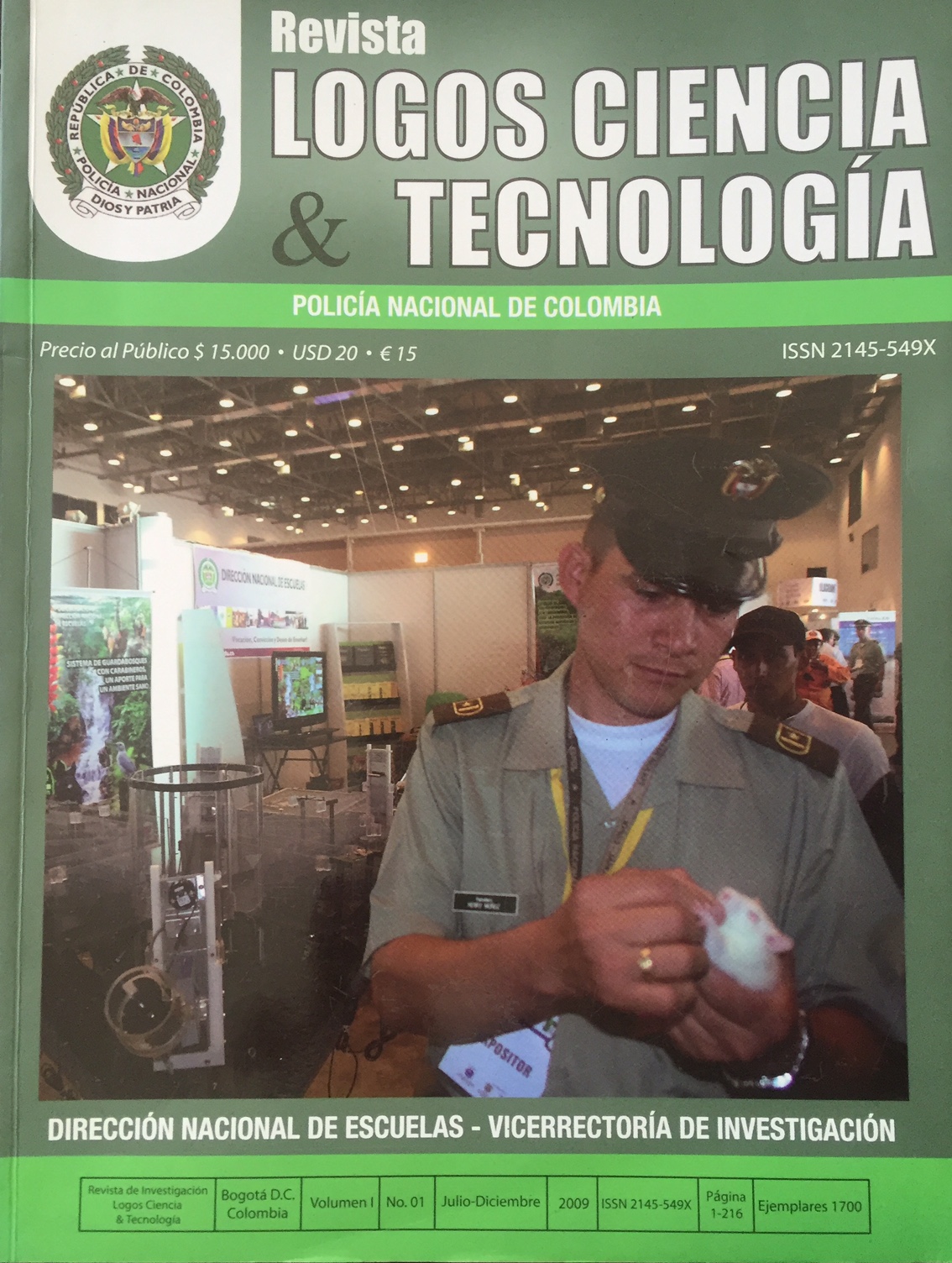Explosives detection with the aid of animals: a review of the scientific literature
DOI:
https://doi.org/10.22335/rlct.v1i1.39Keywords:
Explosives, mines, stimulus control, sense of smell, dogs, rats, bees, antsAbstract
It conducted a systematic review of scientific literature on the detection of explosives with the help of trained animals. Training in perception learning by smell has been particularly useful for detecting landmines. The most exploited has been the dog, followed by several species of rodents (African giant rat and albino rat), more recently, have also tested invertebrate species such as bees and ants. It concludes by confirming the usefulness of animal detection, which is compatible with and complementary to other detection technologies such as physical devices by radiation.Downloads
References
ABRAMSON, C. I. (1994). A primer of invertebrate learning: the behavioral perspective. Washington D. C.: American Psychological Association.
ADAMS, D. R. (1998). Anatomía canina. Estudio sistémico. Zaragoza, España: Acribia.
AGENCIA EFE (2009). Anuncian inversión contra auge de minas antipersona. Portal de Noticias Terra Colombia. Recuperado de: http://www.terra.com.co.
AGENCIA EFE (2006). Crean escuadrón de ratas para detectar minas y otros explosivos. Diario La Nación, San José, Costa Rica. Recuperado de: http://www.nacion.com/ln_ee/2006/mayo/02/ ultima-la11.html
BARRIOS, M. (1990). Patrones de búsqueda terrestre. En: I Seminario Interamericano de Socorrismo y Rescate de Emergencias. Bogotá: Cruz Roja Colombiana.
BATSON, J. D., HOBAN, J. S. y BITTERMAN, M. E. (1992). Simultaneous conditioning in honeybees (Apis mellifera). Journal of Comparative Psychology, 106 (2), 114-119.
BEKOFF, M. (Ed.) (2007). Encyclopedia of human-animal relationships (four volumes). Santa Barbara, CA: Greenwood Press.
CIFUENTES MORALES, J., MÉNDEZ PARDO, L. F., OJEDARINCÓN, C. y ZORRO CÁCERES, I. (2008). Detección de explosivos con ayuda de roedores especie Rattus norvegicus, cepa Wistar. En: Universidad e Investigación: Memorias del 1er. Encuentro Internacional de Semilleros y Grupos de Investigación, Red Investigare (pp. 235-243). Bogotá: Editorial Universidad Antonio Nariño.
COX, C. y otros (2004). Rats for demining: an overview of the APOPO Program. Proceedings of the Eudem Conference on Humanitarian Landmine Detection Technologies.
CUNNINGHAM, J. G. (2003). Fisiología veterinaria. Barcelona: Elsevier España.
DICKINSON, A. (1987). Teorías actuales del aprendizaje animal. Madrid: Debate.
DINSMOOR, J. A. (1995a). Stimulus control: Part I. The Behavior Analyst, 18, 51-68.
FROSOLINI, B. (1998). Los test para conocer a su perro. Barcelona: Editorial De Vecchi.
FROUFE, M. (2004). Aprendizaje asociativo: principios y aplicaciones. Madrid: Thomson- Paraninfo.
GAZIT, I. y TERKEL, J. (2003). Domination of olfaction over vision in explosives detection by dogs. Applied Animal Behaviour Science, 82, 65-73.
GERRITSEN, R. y HAAK, R. (1999). K9 search and rescue. Calgary, Canada: Detselig Enterprises. HARRIS, S. (2008). The honey trap (chemical sensor). Engineering and Technology, 2 (12), 24-26.
INTERNATIONAL CAMPAIGN TO BAN LANDMINES (2009). Colombia. Landmine Monitor Annual Report: 2008. Recuperado de: http://lm.icbl.org/index.php/publications/ display?url=lm/2008/countries/colombia.html
KANDEL, E. R. (2006). En busca de la memoria: el nacimiento de una nueva ciencia de la mente. Madrid: Katz.
KATZ, J. N. (1994). Los perros de la guerra. Muy Interesante, 9 (101), 46-49.
LICKLITTER, R. y NESS, J. W. (1990). Domestication and comparative psychology: Status and strategy. Journal of Comparative Psychology, 104 (3), 211-218.
LORENZ, K. (2003). Cuando el hombre encontró al perro. Barcelona: Tusquets.
MCFEE, J. E. y otros (2009). Detection and dispersal of explosives by ants. Proceedings of SPIE: The International Society for Optical Engineering, 7303, article number 730302.
MÉNDEZ Pardo, L. F., CIFUENTES Morales, J. y OJEDA Rincón, C. (2007). Detección de explosivos con ayuda de roedores especie Rattus norvegicus cepa Wistar. Póster presentado en el XXXI Congreso Interamericano de Psicología, Ciudad de México.
MÉNDEZ PARDO, L. F. y PÉREZ-ACOSTA, A. M. (2009a, junio). Detección de explosivos con ayuda de ratas en ambiente controlado: segunda fase. Póster presentado en el XXXII Congreso Interamericano de Psicología, Ciudad de Guatemala.
MÉNDEZ PARDO, L. F. y PÉREZ-ACOSTA, A. M. (2009b). Investigación policial tras la búsqueda de soluciones contra minas antipersona. Periódico de la Policía Nacional de Colombia, 1, 6-7.
MÉNDEZ PARDO, L. F. y PÉREZ-ACOSTA (en prensa). Research in Colombia about explosives detection with the help of rats. Journal of ERW and Mine Action, 13.3.
PAGEAT, P. (1998). Patología del comportamiento del perro. Barcelona: Pulso Ediciones.
PAPINI, M. R. (2009). Psicología comparada: evolución y desarrollo del comportamiento. Bogotá: Manual Moderno.
POZUELOS, A. (2003). La etología del perro: cómo entender su comportamiento. Madrid: Ateles Editores.
PRESTRUDE, A. M. & TERNES, J. W. (1994). Optimizing substance detection by integration of canine-human team with machine technology. Proceedings of SPIE: The International Society for Optical Engineering, 2093, 633-643.
PRICE, E. O. (1984). Behavioral aspects of animal domestication. Quarterly Review of Biology, 59, 1-32.
RAINS, G. C., TOMBERLIN, J. K. y KULASIRI, D. (2008). Using insect sniffing devices for detection. Trends in Biotechnology, 26 (6), 288-294.
SCORTECCI, G. (1965). Los animales: cómo son, dónde viven, cómo viven, volumen 1: mamíferos. Barcelona: Vergara.
TARPY, R. M. (2000). Aprendizaje: teoría e investigación contemporáneas. Madrid: McGraw- Hill.
TAVAKOLI-ANBARAN, H., MIRI-HAKIMABAD, H. & IZADI-NAJAFABADI, R. (2009). Optimization of a detector collimator for use in a gamma-ray backscattering device for anti- personal landmines detection. Journal of Applied Sciences, 9, 1752-1757.
VERHAGEN, R., Cox y otros. (2003). Preliminary results on the use of Cricetomys rats as indicators of buried explosives in field conditions. En: Geneva International Centre for Humanitarian Demining (Ed.), Mine detection dogs, training operation and odour detection (pp. 175-193). Ginebra, Suiza: Autor.
VERHAGEN y otros (2006). Rats to the Rescue: Results of the First Test on a Real Minefield. Journal of Mine Action 9.2, February. Recuperado de: http://maic.jmu.edu/journal/9.2/RD/ verhagen/verhagen.htm.
VILLENAVE, G. M. (1958). Enciclopedia canina. Barcelona: Noguer.
WEETJENS, B. J. y otros (2009). African pouched rats for the detection of pulmonary tuberculosis in sputum samples. The International Journal of Tuberculosis and Lung Disease, 13 (6), 737-743.
WILLIAMS, M. y otros (1999). Canine detection odor signatures for explosives. Proceedings of SPIE: The International Society for Optical Engineering, 3575, 291-301.
Downloads
Published
Issue
Section
License
This journal provides free and immediate access to its content (https://creativecommons.org/licenses/by/4.0/legalcode#languages), under the principle that making research available to the public free of charge supports greater global knowledge exchange. This means that the authors transfer the Copyrights to the journal, so that the material can be copied and distributed by any means, as long as the authors’ recognition is maintained, and the articles are not commercially used or modified in any way.
































